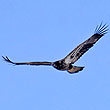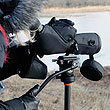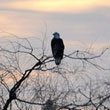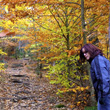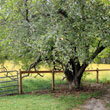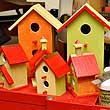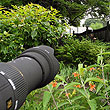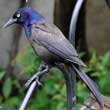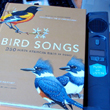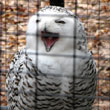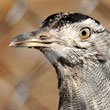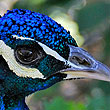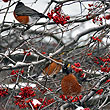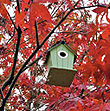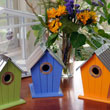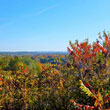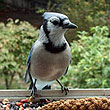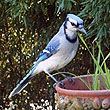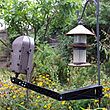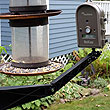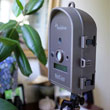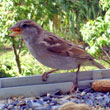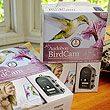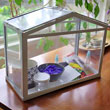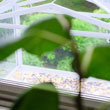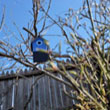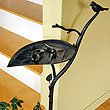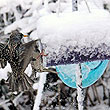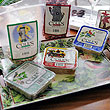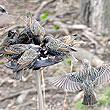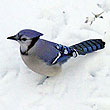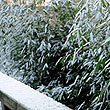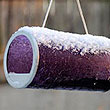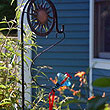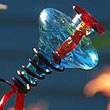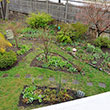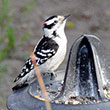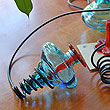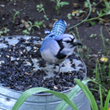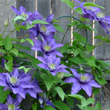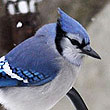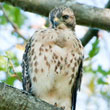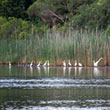Now that Summer has officially started, we want to do a quick look back at how Spring went in the RainyDayGarden.
April: Because of the long Winter, the plants got going a bit later this year, and we have photographic proof. The photo on the left taken on April 12th of last year. The on the right was taken on April 15 of this year. Side-by-side, it is easy to see that things this year were a few weeks behind last year. Oh yeah, it also snowed on the 16th :-)

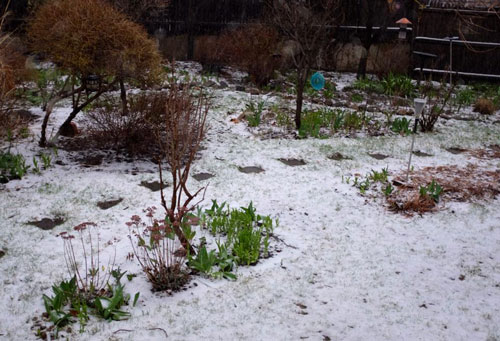
When the April plants finally got going, their blooms were a welcome sight. We are not sure if it was because of the delay, but the plants all seemed to bloom at the same time. We also noticed fewer bugs this year, both the kind which chew on plants and the kind which chew on people.

Most of the RainyDayGarden regulars came back. Some, like the Bloodroots and the grape hyacinths, were even more plentiful than the year before.

We had moved the fritillaria to the front hoping they would get a bit more light and fare better. Most fritillaries contain poisonous alkaloids such as imperialin; some may even be deadly if ingested in quantity. But unfortunately for us, though fritillaria are in the Liliaceae (lily) family, the Japanese Lily beetle is apparently impervious to the alkaloids and find both the leaves and the blooms tasty. They are the reason we don't have many lilies in the RainyDayGarden any more.

By the end of April, the ground plants in the RainyDayGarden have pretty much all awaken, but most of the trees are still quite bare. Brightly colored birds such as the Cardinals stand out clearly on the naked branches. We know that won't last long as the buds on the branches have started to form.

May: May is the nicest month in New England, according to us. The temperature is comfortably cool, flowers are blooming, and there is a fresh smell in the air as the plant world comes back to life. This year was no different. Even though the tulips are the first to bloom in the garden, many of them were still opening up well into the month. The wisteria vine is now covered in large hanging purple clusters, and the irises have started to open in earnest.



By late May, while some trees have yet to bud, all of the bare patches on the ground have disappeared. The state of the trees changed dramatically over the course of a week. It seemed like all the leaves came out in just a few days. With the leaves providing cover, the activities and the noise level from birds increased dramatically as they started to nest.

The end of May is when our two clematis typically bloom. Both the bluish one with the double flower and the pinkish one with a fragrance of vanilla did not disappoint. On the iris front, the yellow ones have since peaked, but the deep purple ones were coming into their own. We are not sure why, though quite healthy, the lilac has not bloomed much the last couple of years. The year was no different.

June: Water is the key to a lush garden, especially in the city. Because it rained on and off in the early part of June, our only gardening task was some light weeding. The other key to a "less work, more nap time " garden is "more perennials, less grass." Not only does having less grass require less maintenance (less cutting, less weeding, etc), plants attract more birds, bees, and other interesting creatures, even if the garden is in the heart of Boston.


The photo on the left was taken on June 5th just as the Siberian Irises (pink blooms on the right) started to flower (that morning). That same patch of Siberian Irises was putting on a show later that same week.

With all the rain, the peonies were now the size of our heads. The white peonies always blooms earlier than the pink ones, but the pink ones are more fragrant. It is really nice to have the light delicate fragrance around for the few weeks they are in bloom. While they make great cut flowers, bugs love to hide in amongst the petals. Every once in a while, some staffer would yell, "Earwig in the office!!!" BTW, unlike the Ceti Eel of Ceti Alpha V, there is absolutely no truth to the 18th century belief that an earwig will crawl into the ear of a person, eat its way into the brain, and cause madness...as cool as that may be!!!

OK, we don't have our own satellite, but this is our version of a Google Earth satellite view of the RainyDayGarden. Looking down, it is easier to see the various geometric and fractal patterns.

Just in case anyone thought that our "interns" were all warm and fuzzy, we got this pic of Milo lying in wait out in the RainyDayGarden. Fortunately for our flying friends, we don't let him out during their feeding times of dawn and dusk. Four-legged critters are, unfortunately, on their own.

With the exception of the passiflora, most of the plants survived the Winter. As many of the perennials are well established, we didn't have to do much in the garden. This was a short but very pleasant Spring. We look forward to a warm and relaxing Summer. [Permalink] - RDG Spring Summary
|

